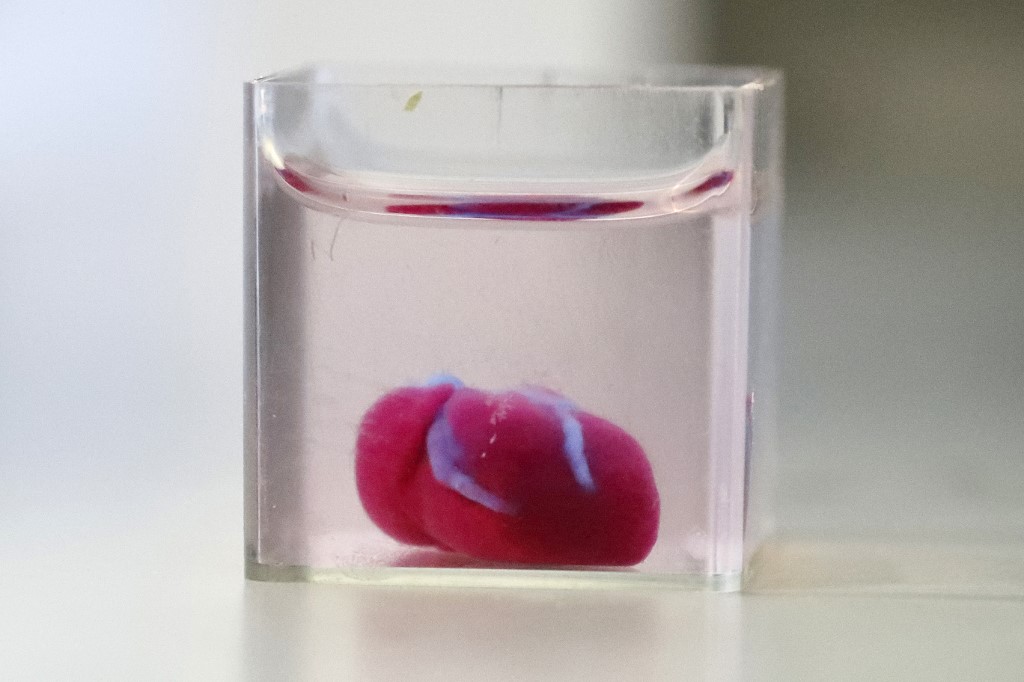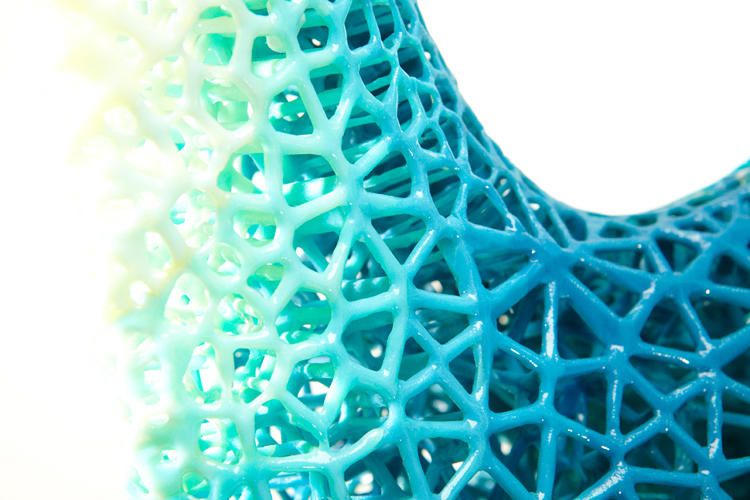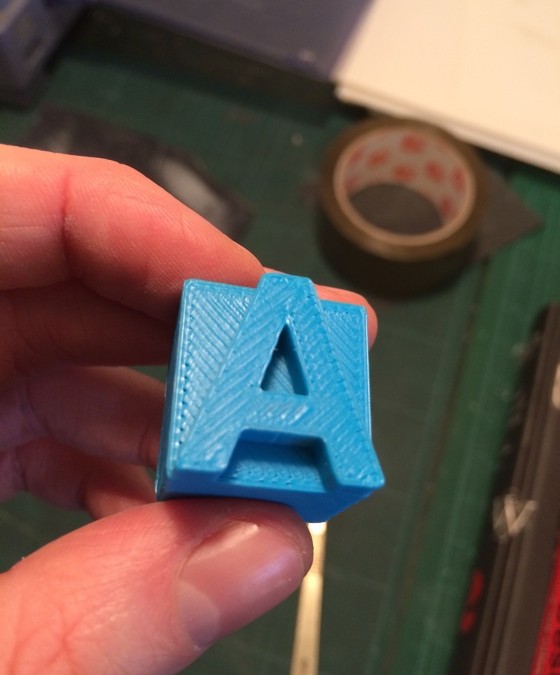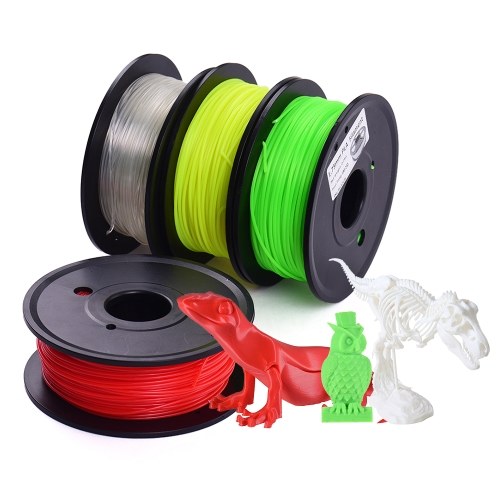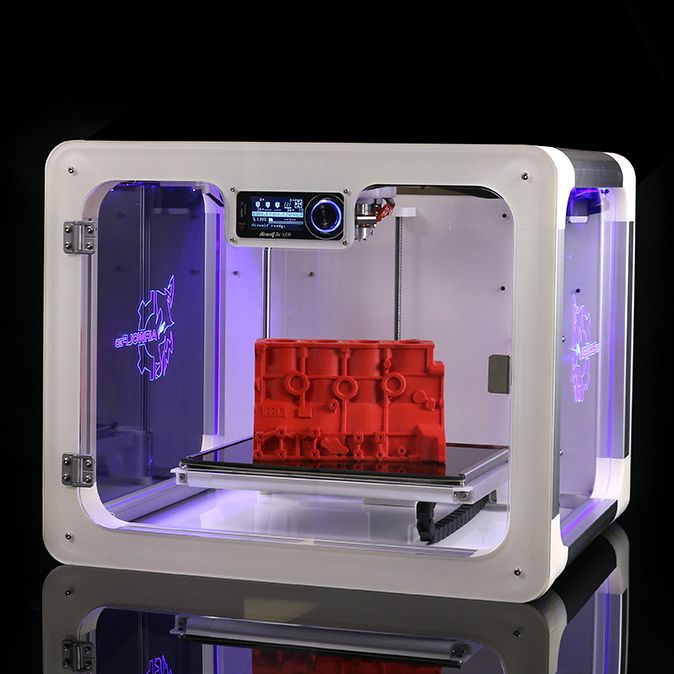3D printer heart
Boston University's new 3D printed mini human heart beats on its own
0Shares
A research team led by Boston University has used 3D printing technology to develop a miniature replica of a human heart – and it beats like the real thing.
Named the cardiac miniaturized Precision-enabled Unidirectional Microfluidic Pump, aka the miniPUMP, the device was created using a combination of stem cell-derived human heart cells and micro-scale 3D printed acrylic parts. Designed to behave like a real heart chamber, the miniPUMP doesn’t rely on any external sources of power, instead beating by itself thanks to its live tissue.
The researchers believe their heart chamber replica could serve as a testbed to study how the organ works in the human body. It can be used to track how the heart grows in an embryo, how heart tissue is affected by diseases, and how effective new medications are in treating said diseases, all without the need for human testing.
“We can study disease progression in a way that hasn’t been possible before,” says Alice White, a Boston University College of Engineering professor. “We chose to work on heart tissue because of its particularly complicated mechanics, but we showed that, when you take nanotechnology and marry it with tissue engineering, there’s potential for replicating this for multiple organs.”
The challenge of studying the heart
According to the Centers for Disease Control and Prevention, heart disease is the leading cause of death for both men and women in the US, with around 659,000 mortalities every year. That’s one in four deaths. As such, there’s an urgent need to study the vital organ.
However, due to its inaccessible location in the human body, the heart is a tricky thing to study as it can’t just be removed, examined, and replaced on a whim. To address this, researchers have tried several alternative approaches: they’ve manually pumped blood through cadaver hearts and they’ve spring-loaded lab-grown heart tissues to make them expand and contract.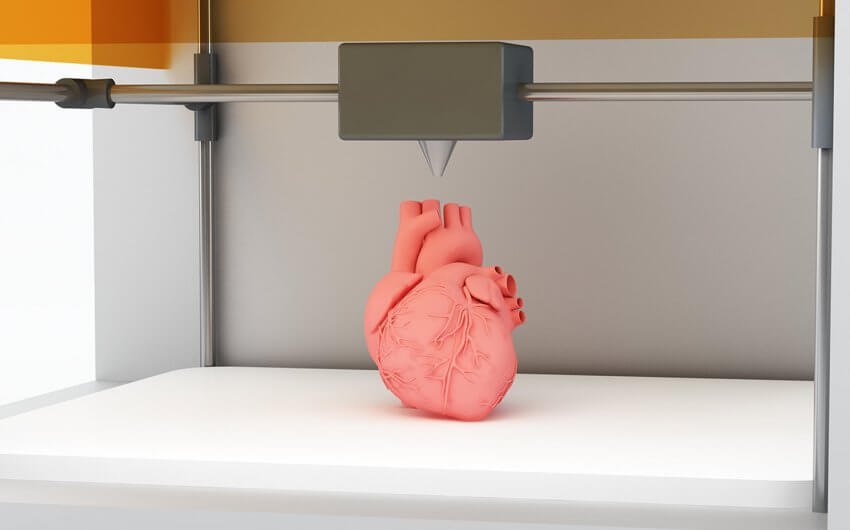 Unfortunately, we’re yet to find a suitable lifelike proxy as reanimated hearts can’t beat indefinitely and springs don’t contract like real muscle fibers.
Unfortunately, we’re yet to find a suitable lifelike proxy as reanimated hearts can’t beat indefinitely and springs don’t contract like real muscle fibers.
With innovations like the miniPUMP, researchers could eventually mimic and study diseases such as hypertension and valve disease in a more accurate manner. The device is also expected to streamline the drug development process for upcoming medicines, enabling lab-based testing in lieu of costly and tedious human trials.
A large-scale replica of the 3D printed scaffold that supports the heart tissue. Photo via Christos Michas.How was the miniPUMP developed?
The miniPUMP measures just three square centimeters and features an acrylic scaffold 3D printed using two-photon direct laser writing, a very precise form of micro-SLA. The tiny acrylic valves within open and close to control the flow of fluid, while the miniature tubes serve as arteries and veins. To make the device beat, the researchers also integrated heart muscle cells called cardiomyocytes, which were differentiated from pluripotent stem cells.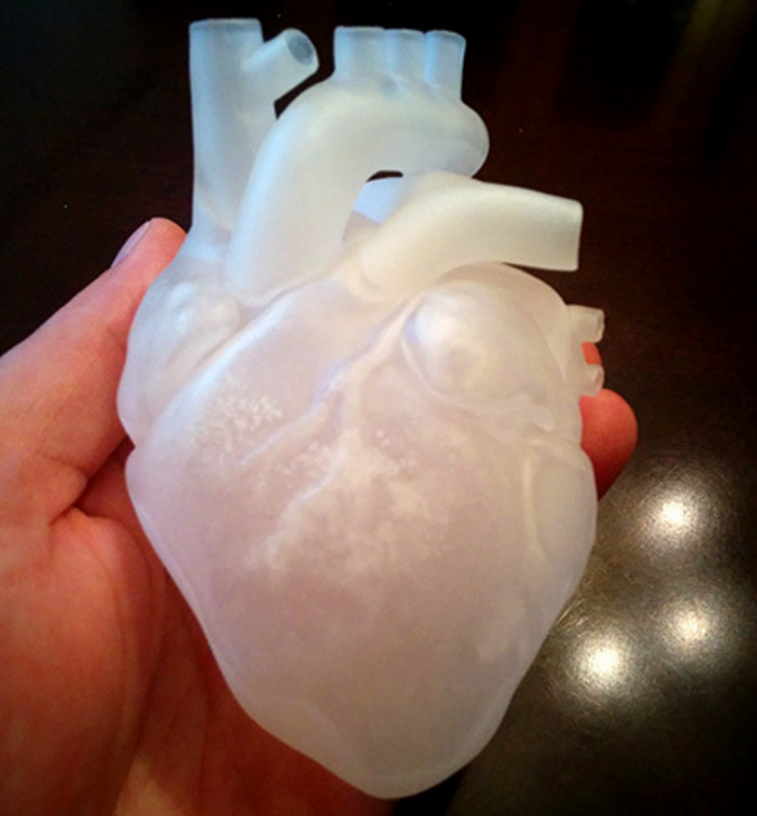
The decision to make the miniPUMP so small was a deliberate one, as the 3D printed acrylic scaffolds had to be strong enough to support the structure but thin enough to bend and move with the contracting heart tissue.
“The structural elements are so fine that things that would ordinarily be stiff are flexible,” adds White. “By analogy, think about optical fiber: a glass window is very stiff, but you can wrap a glass optical fiber around your finger. Acrylic can be very stiff, but at the scale involved in the miniPUMP, the acrylic scaffold is able to be compressed by the beating cardiomyocytes.”
As far as next steps go, the miniPUMP research team aims to refine the technology and find ways of manufacturing it reliably. The work can also eventually be applied to implantable patches that may fix defects in the heart, as well as other organs such as livers.
The project is being conducted as part of CELL-MET, a joint National Science Foundation Engineering Research Center in Cellular Metamaterials led by Boston University.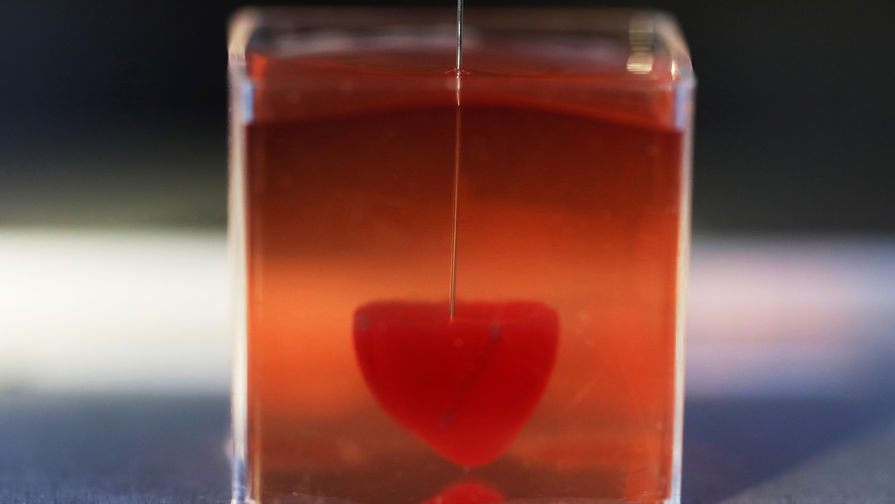 The center’s ultimate goal is to create devices capable of regenerating diseased human heart tissue.
The center’s ultimate goal is to create devices capable of regenerating diseased human heart tissue.
The 3D printing of human heart replicas and models is something we’ve seen before. Just last month, researchers from the Technical University of Munich (TUM) and the University of Western Australia developed 3D printed artificial heart valves made from a patient’s own cells that grow as the individual ages. The approach hopes to overcome the drawbacks of conventional prosthetic heart valves, which only last a limited number of years and therefore require multiple replacement surgeries.
Elsewhere, researchers from the Chinese Academy of Sciences (CAS) recently converted a six-axis robotic arm into a 3D bioprinter and used it to fabricate a complex-shaped blood vessel scaffold. The 3D printed vascularized heart tissue remained alive and beating for six months, and could demonstrate a feasible method of bioprinting functional tissues and organs in the future.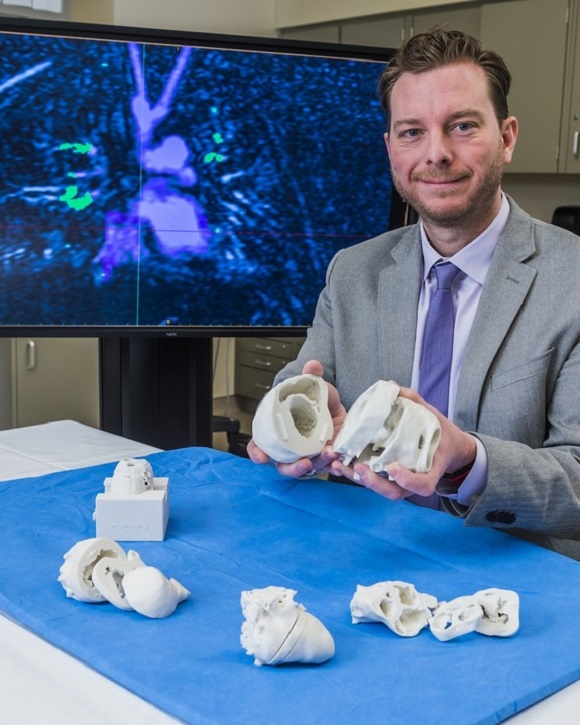
Subscribe to the 3D Printing Industry newsletter for the latest news in additive manufacturing. You can also stay connected by following us on Twitter, liking us on Facebook, and tuning into the 3D Printing Industry YouTube Channel.
Looking for a career in additive manufacturing? Visit 3D Printing Jobs for a selection of roles in the industry.
Featured image shows a side view image of the miniPUMP being taken in the lab. Photo via Jackie Ricciardi.
Tags Alice White Boston University CELL-MET miniPUMP
Kubi Sertoglu
Kubi Sertoglu holds a degree in Mechanical Engineering, combining an affinity for writing with a technical background to deliver the latest news and reviews in additive manufacturing.
This Squishy 3D-Printed Human Heart Feels Like the Real Thing
In the intro to the HBO sci-fi series Westworld, a 3D printer churns out humanoid robots, delicately assembling the incredible complexities of the human form so that those robots can go on to—spoiler alert—do naughty things.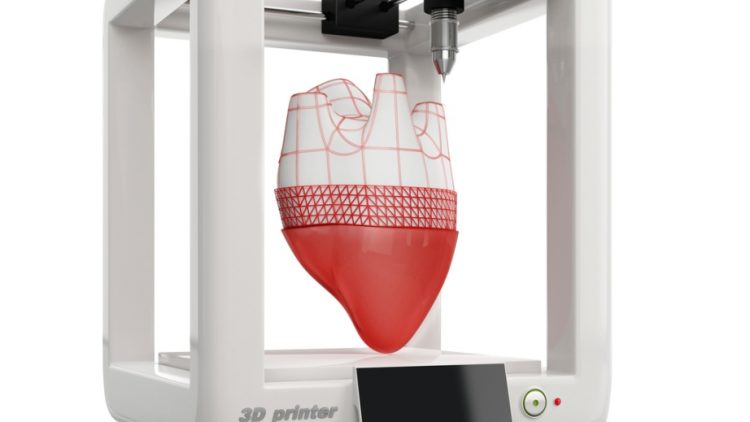 It takes a lot of biomechanical coordination, after all, to murder a whole lot of flesh-and-blood people.
It takes a lot of biomechanical coordination, after all, to murder a whole lot of flesh-and-blood people.
Speaking of: Researchers just made a scientific leap toward making 3D-printed flesh and blood a reality. Writing recently in the journal ACS Biomaterials Science & Engineering, a team described how they repurposed a low-cost 3D printer into one capable of turning an MRI scan of a human heart into a deformable full-size analog you can actually hold in your hand. Squeeze it, and it’ll give like the real thing. Slice it open, and you’ll find chambers. The idea isn’t to one day realize the homicidal humanoids of Westworld, but to give surgeons a better way to practice on a patient’s heart before an operation. The advance might eventually lead to fully-functioning 3D-printed hearts, and give medical device developers an unprecedented platform for testing their wares.
The researchers call their technique the Freeform Reversible Embedding of Suspended Hydrogels, or FRESH. They begin with a scan of a real heart and translate the data into something a 3D printer can read. Because the device works by depositing layers of material one on top of another, they run the 3D image through a slicer program. “For every layer, it basically defines the path that the material is going to be extruded, and then feeds that to the printer,” says Adam Feinberg, a biomedical engineer at Carnegie Mellon University who coauthored the new paper.
They begin with a scan of a real heart and translate the data into something a 3D printer can read. Because the device works by depositing layers of material one on top of another, they run the 3D image through a slicer program. “For every layer, it basically defines the path that the material is going to be extruded, and then feeds that to the printer,” says Adam Feinberg, a biomedical engineer at Carnegie Mellon University who coauthored the new paper.
Video: Eman Mirdamadi, Daniel Shiwarski, Joshua Tashman
That printer churns out alginate—a squishy material derived from seaweed—that the researchers chose both for its low cost and likeness to the material properties of human heart tissue. But instead of it extruding it into air, as a normal 3D printer might do when building something out of plastic, this extrudes the ersatz heart into a container of support gel, specifically gelatin.
“The analogy I have is: Imagine you were printing inside of hair gel,” says Feinberg.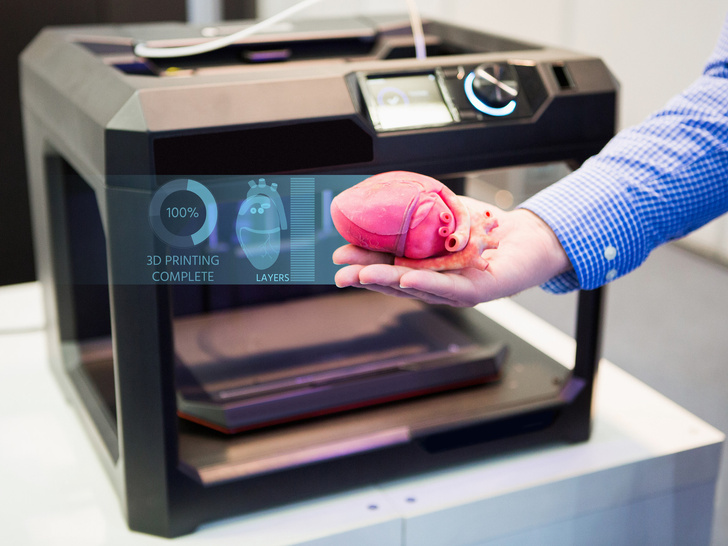 Think of the little bubbles suspended in that bottle of gel—the material is providing enough support for them to float indefinitely, or at least until you squeeze the gel out of the bottle. In this case, the gelatin offers enough give for the needle of the 3D printer to slide through. “Whatever you extrude stays embedded in place, kind of like those air bubbles in hair gel,” Feinberg says.
Think of the little bubbles suspended in that bottle of gel—the material is providing enough support for them to float indefinitely, or at least until you squeeze the gel out of the bottle. In this case, the gelatin offers enough give for the needle of the 3D printer to slide through. “Whatever you extrude stays embedded in place, kind of like those air bubbles in hair gel,” Feinberg says.
Printing in the gelatin bath
Video: Eman Mirdamadi, Daniel Shiwarski, Joshua Tashman
And now for something completely different when it comes to the art of artificial hearts: jello shots. After the organ is done printing, the researchers need a way to dissolve the gel lattice that’s surrounding it, and they use a familiar method. “I think a lot of people have experienced this from using gelatin in baking or making jello shots,” says Feinberg. “It's actually a liquid when you warm it up, but it becomes a solid gel when you cool it down. And so we take advantage of that. ” When they’re ready to extract the heart, all Feinberg has to do is raise the bath to body temperature, melting away the support gel and leaving behind the 3D-printed structure.
” When they’re ready to extract the heart, all Feinberg has to do is raise the bath to body temperature, melting away the support gel and leaving behind the 3D-printed structure.
Surgeons planning operations have previously made use of 3D-printed hearts based on scans of a patients’ own organs. But those have been made the old-fashioned way: with hard plastic. This new alginate heart, by contrast, has a similar elasticity to real tissue. “When you squeeze on it or push on it, it deforms the same amount, which is obviously much more than a hard rubber or plastic,” says Feinberg. This makes it a much more realistic tool, allowing surgeons to, say, practice suturing, which would be impossible on impenetrable plastic.
Living heart printed on a 3D printer - Kommersant FM - Kommersant
In Israel, for the first time in the world, a living heart was created on a 3D printer, which consists of tissues and blood vessels, and also has cameras. True, at the moment it can only suit a rabbit because of its small size.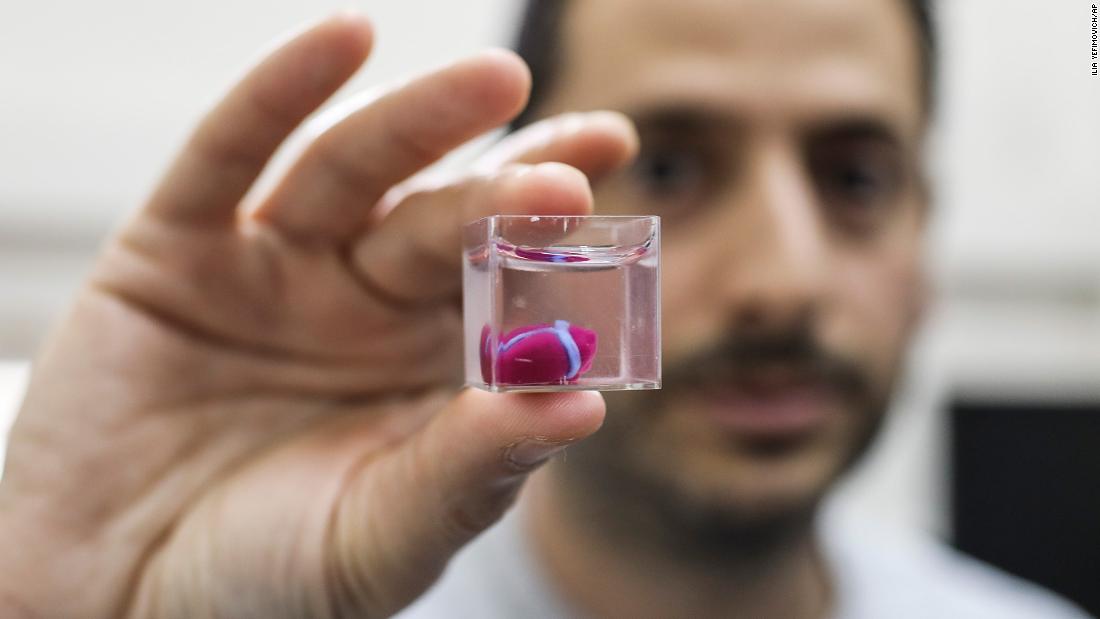 But scientists from the University of Tel Aviv are confident that in the future they will be able to print a heart for a person. How did you manage to create an organ on the printer? And can we talk about a revolution in medicine? Anna Nikitina and Gleb Silko will tell.
But scientists from the University of Tel Aviv are confident that in the future they will be able to print a heart for a person. How did you manage to create an organ on the printer? And can we talk about a revolution in medicine? Anna Nikitina and Gleb Silko will tell.
Photo: Yaroslav Chingaev, Kommersant / buy photo
The world's first 3D-printed heart resembles a berry: its size is about 2.5 cm, although it took more than three hours to print. However, even now the achievement of Israeli scientists is called a medical breakthrough. The heart is made from human fat cells and connective tissue. Previously, synthetic substances were used for this.
In the future, this new technology will not only solve the problem of the shortage of organs for transplantation, but will also facilitate the transplantation process as much as possible, says Israeli journalist Sasha Vilensky: “The most global problem is the rejection of a transplanted organ by the body.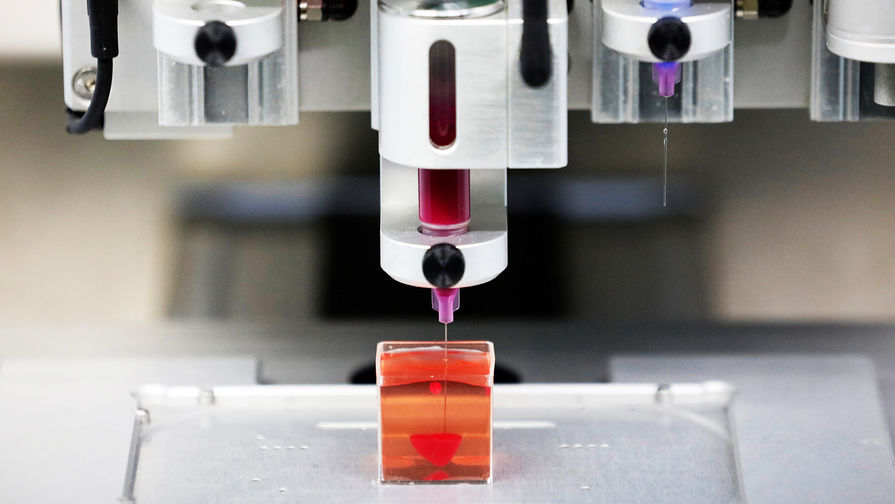 There is always such a danger. But the whole point of interest is that in the case of a 3D printer, we are dealing with what is grown and printed from the cells of the patient himself, thus simply removing the issue of rejection. This is genius".
There is always such a danger. But the whole point of interest is that in the case of a 3D printer, we are dealing with what is grown and printed from the cells of the patient himself, thus simply removing the issue of rejection. This is genius".
The problem of organ shortages around the world is really acute. In Russia, for example, in 2017, there were only 900 donors per 6 million people. And the most complex organ - the heart - was transplanted 250 times in a year, while it required almost 2 million people. The experience of Israeli scientists in printing hearts is impressive, and it can be used in other countries, says Yousef Hesuani, executive director of the 3D Bioprinting Solutions laboratory. True, according to him, it is still too early to talk about a revolution in medicine: “Scientists have used a very interesting material based on collagen - this is a protein in the body of mammals. In addition, it is from the point of view of creating a complex three-dimensional structure that the researchers are great, they did a really good job.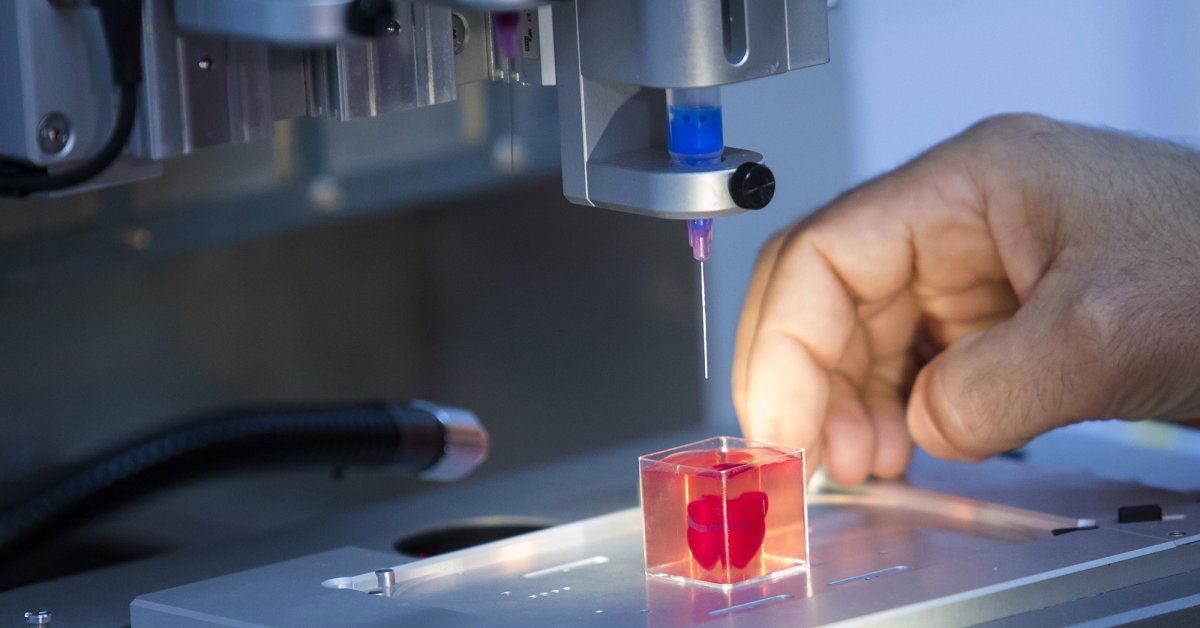 However, the form does not yet determine the function, especially if we are talking about such a complex organ as the heart.
However, the form does not yet determine the function, especially if we are talking about such a complex organ as the heart.
New approaches have been used, but unfortunately it is too early to say that there has been an incredible breakthrough in this area.
When, for example, the native organ is removed and a new one is transplanted, and the function is fully restored, this will become an unconditional revolution.”
Tel Aviv University itself, where the heart was printed, says that in the future the necessary organs can be printed directly in hospitals. Now similar developments are being carried out all over the world. Russian companies, for example, are trying to create an artificial liver and kidneys. True, this process is too expensive, and it is unlikely that the technology will be introduced on a mass level in the near future, says the director of the National Medical Center for Transplantation and Artificial Organs. Shumakova Sergei Gauthier: “What the Israeli doctors did is just great. This proves that these possibilities can really be used to create some kind of anatomical structures. As for other organs, such as the kidney and liver, our institute is also working on this. We also have bioprinters, but frankly, growing such tissue complexes is a rather complicated and expensive technology, which is very different from the traditional organ transplantation technique.”
This proves that these possibilities can really be used to create some kind of anatomical structures. As for other organs, such as the kidney and liver, our institute is also working on this. We also have bioprinters, but frankly, growing such tissue complexes is a rather complicated and expensive technology, which is very different from the traditional organ transplantation technique.”
There are already examples in the world when doctors managed not only to create artificial organs on a 3D printer, but also successfully transplant them, for example, a few years ago in Russia a thyroid gland was printed, which took root in a patient. And last year, scientists from Jerusalem implanted a prosthesis for the skull on a patient, and it was also created using three-dimensional technologies.
During this year, Israeli scientists plan to test printed hearts on rabbits and rats, and then start working on creating a human heart.
3D printed heart saved 4-year-old Mia Gonzalez / Habr
Welcome to the iCover blog. In surgery, there are cases when the task facing the specialist allows the use of several surgical methods. And only one of them is the most correct. 3D technologies helped the specialists of the Nicklaus Cardiovascular Center Clinic in Miami to find and make such a decision. About 4-year-old Mia Gonzalez, whose health was restored thanks to a 3D printer and the prospects for a new approach to surgery using the capabilities of 3D prototyping, we will tell in our article.
In surgery, there are cases when the task facing the specialist allows the use of several surgical methods. And only one of them is the most correct. 3D technologies helped the specialists of the Nicklaus Cardiovascular Center Clinic in Miami to find and make such a decision. About 4-year-old Mia Gonzalez, whose health was restored thanks to a 3D printer and the prospects for a new approach to surgery using the capabilities of 3D prototyping, we will tell in our article.
Little Mia Gonzalez was destined to meet the first serious trials in the first years of her life. And to be exact, the first 3.5 years, during which she underwent at least 10 hospitalizations, turned into one continuous test for the girl. Endless pathological colds and runny noses, which became her faithful companions, completely deprived the baby of her usual childhood joys. In recent months, to support respiratory functions at a vital level, the girl had to take special medications.
Examinations done during Mia's stay at the local clinic led the doctors to a disappointing conclusion: the child suffers from a rare pathology called "double aorta", the incorrect position of which leads to compression of the trachea and, as a result, problems with breathing and swallowing.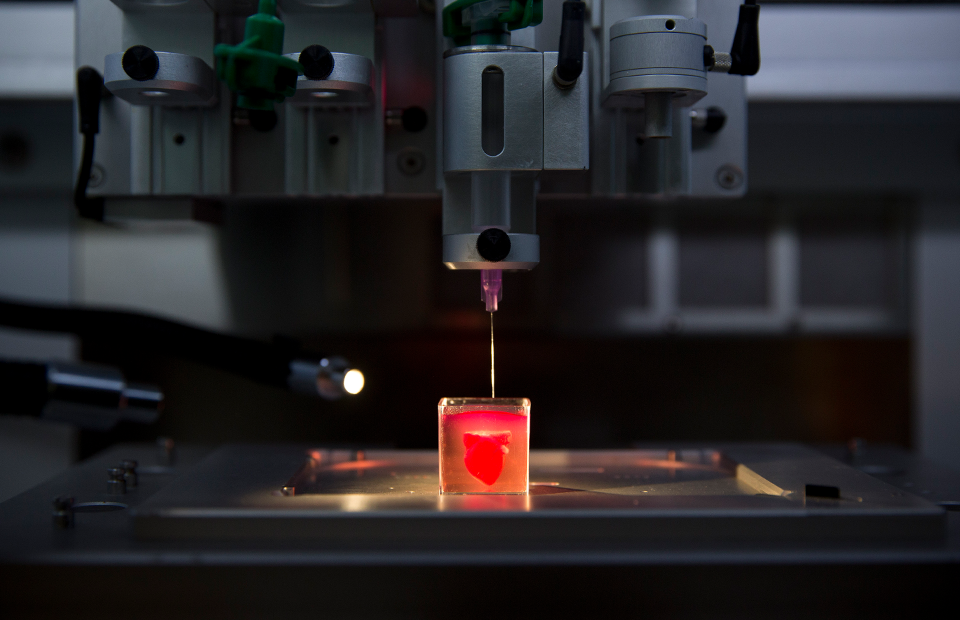 The conclusion of the doctors shocked the parents: 4-year-old Mia will need open-heart surgery to correct the aorta to bring the situation under control.
The conclusion of the doctors shocked the parents: 4-year-old Mia will need open-heart surgery to correct the aorta to bring the situation under control.
The complexity and non-standard nature of the case served as a reason for doctors to turn to innovative 3D printing technologies for help. A 3D-printed model of Mia's heart helped to find the only correct solution from the intricate labyrinth of equiprobable outcomes.
Augmented Reality Mia
The latest 3D printer, which the Niklaus Children's Cardiovascular Surgery Clinic in Miami received in 2015, has already been used to print exact copies of the organs of 25 children with congenital heart defects who need complex surgical treatment. The ability to accurately visualize organs subject to surgical intervention “in the original”, taking into account all the individual characteristics of the patient, allowed Dr. Burke to find and make decisions that, according to him, he would never have dared to be guided only by logic, knowledge and accumulated experience. And the results of this approach exceeded all expectations.
And the results of this approach exceeded all expectations.
As in the previous cases, an in-depth analysis of the situation was preceded by making an exact copy of the girl's heart affected by pathological changes. As in the case of previous patients, MRI and CT scan data were used as an “information template” for printing Mia’s heart model, and plastic or rubber was used as the starting material.
It took Redmond Burke, the leading surgeon of the clinic, more than two weeks to plan the operation and find the most gentle technology. And here, again, an invaluable help was provided by the exact prototype made, with which the doctor often went to his colleagues to clarify some ambiguous question. As a result, reflections on Mia's case and the accumulated useful information formed the basis of a non-standard decision - to make an incision not on the left side of the sternum, as prescribed in such cases, but on the right. This, according to Burke, greatly increased the chances of baby Mia for a successful operation and a speedy postoperative rehabilitation.
"If not for this model, I would have had to make a larger incision, which could have made the girl suffer much more, and also require more time for rehabilitation," Burke said, adding that it helped to put aside any doubts when making a decision, mainly the 3D printer.
Method prospects
Despite the fact that the method used in the operational practice of the Niklaus Clinic does not involve printing and replacing a biological organ, an exact prototype in many cases will eliminate the need for transplantation, limiting itself to local surgical intervention. According to information provided by Scott Rader, general manager of Stratasys, which supplies 3D printers to the world market, today there are already 200 such models in operation in the world and 75 of them are in US clinics.
Until recently, the use of 3D printing in medicine was limited to prototyping surgical instruments and performing some simple operations. And only in the last few years, the proposed technologies have made it possible to print exact copies of the organs of patients using the results of hardware laboratory studies. Printed prototypes, according to Rader, are an indispensable tool for complex operations, which include the removal of a brain tumor. The modeling of pathologies in the organs of complex patients also opens up excellent prospects for use within the walls of medical universities.
Printed prototypes, according to Rader, are an indispensable tool for complex operations, which include the removal of a brain tumor. The modeling of pathologies in the organs of complex patients also opens up excellent prospects for use within the walls of medical universities.
“It is very important that having a prototype organ of a patient who is preparing for surgery at his disposal, the surgeon has a unique opportunity to practice the technique of surgical intervention on the model as many times as necessary in order to find the best option,” says Reider.
In the coming years, according to Scott Rader, surgeons will be able to print new organs for people on printers, using “ink” based on human cells instead of plastic and rubber. But 3D printed organ imitation is certainly “a breakthrough technology that is fundamentally affecting how we communicate with patients, how we prepare for surgery, how we do it, and how we educate medical students,” says the Harvard professor.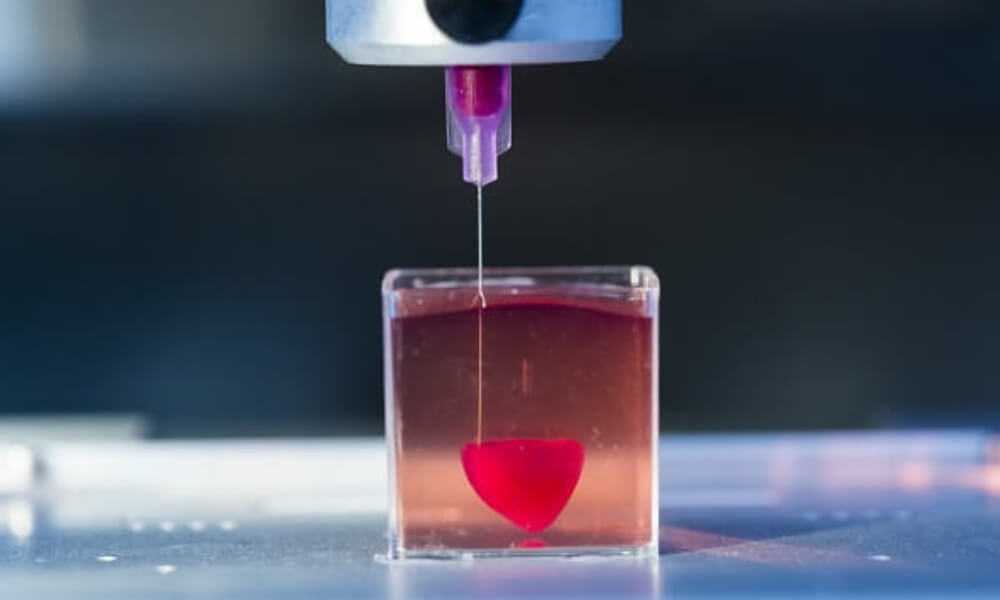 medical school and member of the Simulation Science Circle at Beth Israel Deaconess Medical Center in Boston, Daniel W. Jones.
medical school and member of the Simulation Science Circle at Beth Israel Deaconess Medical Center in Boston, Daniel W. Jones.
Selling 200 printers worldwide is a drop in the ocean. Today, the situation is more like “… a big secret, kept in deep secrecy,” says Dr. Jones, who has devoted all his time to studying the views of surgeons on the new technology. At the same time, the situation with its implementation inspires optimism, since the cost of equipment becomes more affordable, and the results achieved should be recognized as the most convincing argument.
“A similar 3D printer and related software typically cost up to $100,000, which is less than a CT or MRI lab suite,” says Scott Reider. And taking into account the indicators of the effectiveness of surgical treatment and the reduction of the time required for the operation and rehabilitation of the patient, the use of 3D organ prototyping technology opens up the most brilliant prospects.
It's been 4 months since Mia's surgery.